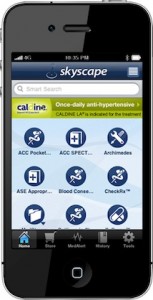 Marty DeAngelo, vice president and director of interaction design at Digitas Health, believes that pharmaceutical companies are failing to capitalize on the rise of the mobile channel as a way to reach consumers and healthcare professionals. In a column over at MediaPost, DeAngelo claims that of the top 25 drug brands in 2010, only three had mobile websites as of December 2011.
Marty DeAngelo, vice president and director of interaction design at Digitas Health, believes that pharmaceutical companies are failing to capitalize on the rise of the mobile channel as a way to reach consumers and healthcare professionals. In a column over at MediaPost, DeAngelo claims that of the top 25 drug brands in 2010, only three had mobile websites as of December 2011.
"Plavix has a brand site for consumers, Lipitor Savings provides information to consumers about their savings program, and only Nexium has a mobile site specifically aimed at HCPs," DeAngelo wrote. "In fact, based on recent research I’ve conducted, there are only a handful of mobile websites in all of the pharma space – 15 at my last count."
DeAngelo chalks up pharma's inaction to three major reasons: a lack of understanding of mobile use cases, a misunderstanding of how to convey information in a mobile context, and regulatory discomfort.
According to DeAngelo, healthcare providers look to the mobile channel to confirm what they think they already know and consumers are often looking for information about a drug brand that their physician has already prescribed them. In other words, mobile is not an acquisition channel.
While DeAngelo may be right about the lack of mobile specific websites for drug brands, there are a number of other ways that pharma companies can leverage mobile beyond mobile specific websites.
Last year, Physicians Interactive Holdings and Remedy Systems launched a mobile advertising network that serves ads specifically targeted to healthcare providers. The network is also testing health-related ads targeting consumers. The network places ads in smartphone medical apps and it launched with some 54 different apps already onboard. Pharma companies are also creating smartphone apps -- we highlighted 10 such apps in a roundup we put together last January.
For more on DeAngelo's tips for pharma companies looking to leverage mobile, check out his post here.
















